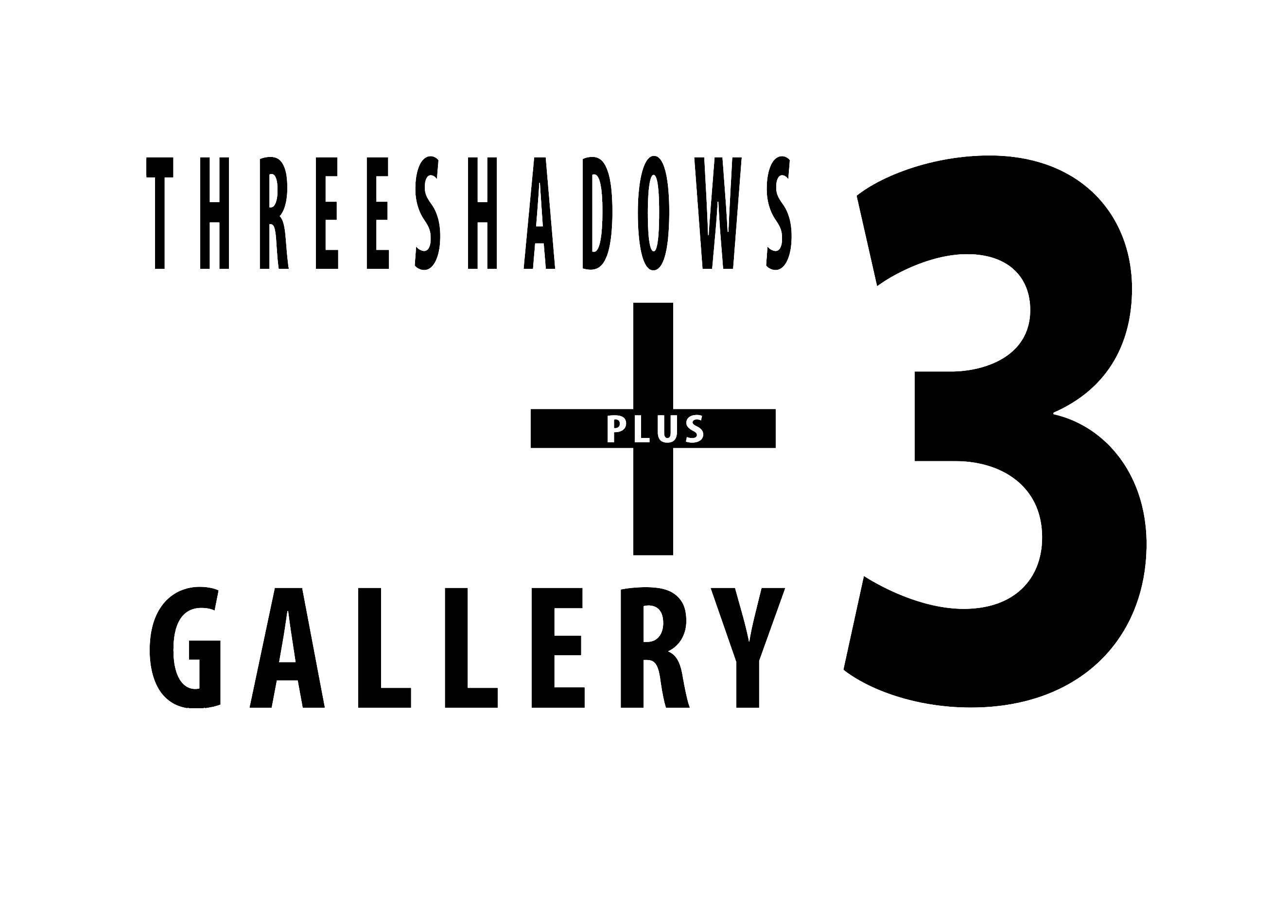Series of Diary - A Scene with Me, 1998~
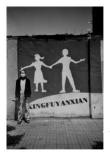
Diary-a scene with me No. 11
50.8 x 61cm
Edition of 9 Gelatin Silver Print
| 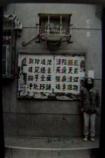
Diary-a scene with me No. 8
50.8 x 61cm
Edition of 9 Gelatin Silver Print | 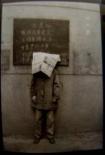
Diary-a scene with me No. 6
50.8 x 61cm
Edition of 9 Gelatin Silver Print |
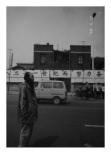
Diary-a scene with me No. 3
50.8 x 61cm
Edition of 9 Gelatin Silver Print
| 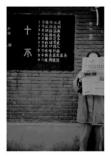
Diary-a scene with me No. 1
50.8 x 61cm
Edition of 9 Gelatin Silver Print
| 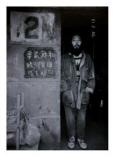
Diary-a scene with me No. 2
50.8 x 61cm
Edition of 9 Gelatin Silver Print
|
Series of Tossing Bus, 1989
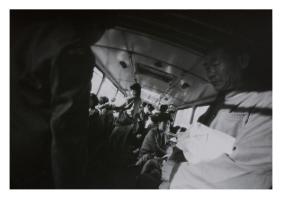
Tossing Bus No. 7 50.8 x 61cm
Edition of 15
Gelatin Silver Print
| 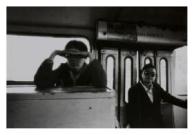
Tossing Bus No. 6 50.8 x 61cm
Edition of 15 Gelatin Silver Print | 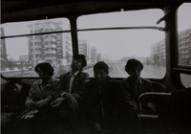
Tossing Bus No. 4 50.8 x 61cm
Edition of 15 Gelatin Silver Print |
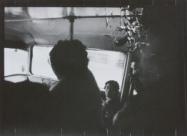
Tossing Bus No. 1 50.8 x 61cm
Edition of 15 Gelatin Silver Print
| 
Tossing Bus No. 2 50.8 x 61cm
Edition of 15 Gelatin Silver Print | 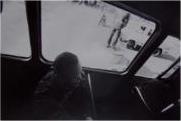
Tossing Bus No. 3 50.8 x 61cm
Edition of 15 Gelatin Silver Print |
Series of Dancing Street, 1998
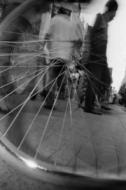
Dancing Streets No. 7 50.8 x 61cm
Edition of 9 Gelatin Silver Print
| 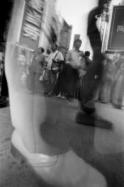
Dancing Streets No. 4 50.8 x 61cm
Edition of 9 Gelatin Silver Print
| 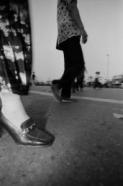
Dancing Streets No. 6
50.8 x 61cm
Edition of 9 Gelatin Silver Print
|

Dancing Streets No. 1
50.8 x 61cm
Edition of 9 Gelatin Silver Print
| 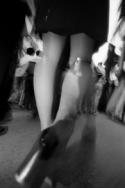
Dancing Streets No. 2 50.8 x 61cm
Edition of 9 Gelatin Silver Print | 
Dancing Streets No. 3
50.8 x 61cm
Edition of 9 Gelatin Silver Print |
Series of Me in My Surroundings, 1997

Me in my surroundings No.2
50.8 x 61cm
Edition of 9 Gelatin Silver Print
| 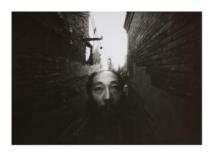
Me in my surroundings No.4
50.8 x 61cm
Edition of 9 Gelatin Silver Print
| 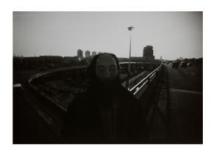
Me in my surroundings No.1
50.8 x 61cm
Edition of 9 Gelatin Silver Print
|
Series of My Illusory Beijing, 2008
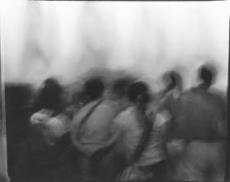
No. 10 Group, Tian'anmen 50.8 x 61cm
Edition of 9 Gelatin Silver Print
| 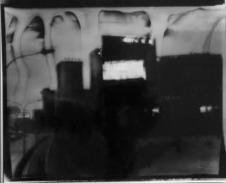
No. 7 Zhongguancun with a Figure 50.8 x 61cm
Edition of 9 Gelatin Silver Print
| 
No. 6 Qianmen 50.8 x 61cm
Edition of 9 Gelatin Silver Print
|
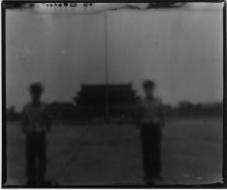
No. 1 Tian 'anmen
50.8 x 61cm
Edition of 9 Gelatin Silver Print
| 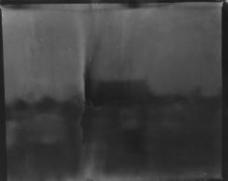
No. 5 Tian'amen Group 50.8 x 61cm
Edition of 9 Gelatin Silver Print
| 
No. 3 CCTV 50.8 x 61cm
Edition of 9 Gelatin Silver Print
|
Series of Images Through a Dog's Mind, 1995
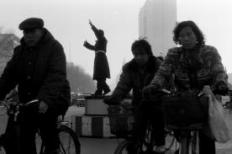
Images Through a dog's Mind No. 10 50.8 x 61cm
Edition of 9 Gelatin Silver Print
| 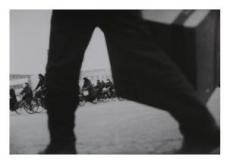
Images Through a dog's Mind No. 13 50.8 x 61cm
Edition of 9 Gelatin Silver Print
| 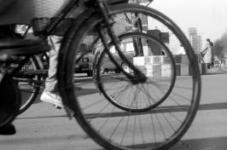
Images Through a dog's Mind No. 2 50.8 x 61cm
Edition of 9 Gelatin Silver Print
|
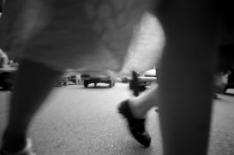
Images Through a dog's Mind No. 7 50.8 x 61cm
Edition of 9 Gelatin Silver Print
| 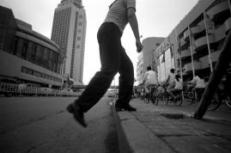
Images Through a dog's Mind No. 1 50.8 x 61cm
Edition of 9 Gelatin Silver Print | 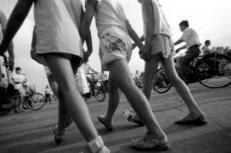
Images Through a dog's Mind No. 3 50.8 x 61cm
Edition of 9 Gelatin Silver Print
|
Series of My Illusory City, 1987
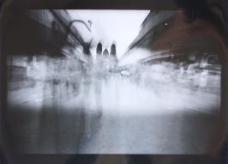
My Illusory City No.3 50.8 x 61cm
Edition of 15 Gelatin Silver Print
| 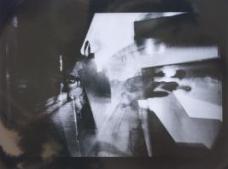
My Illusory City No.2 50.8 x 61cm
Edition of 15 Gelatin Silver Print
| 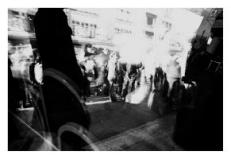
My Illusory City No.9 50.8 x 61cm
Edition of 15 Gelatin Silver Print
|
Series of Scenery, 1986~1989
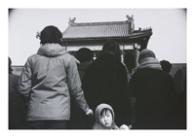
No. 6 A Child in the Crowd 50.8 x 61cm
Edition of 15 Gelatin Silver Print
| 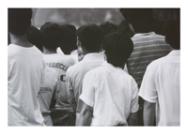
No. 5 A child 50.8 x 61cm
Edition of 15 Gelatin Silver Print
| 
No. 7 Winter Sunlinght
and Two men reanding newspapers 50.8 x 61cm
Edition of 15 Gelatin Silver Print
|
Series of One meter, Scenery Behind Me, 1988~1989
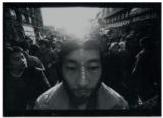
No. 6
50.8 x 61cm
Edition of 15 Gelatin Silver Print
| 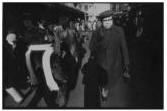
No. 4
50.8 x 61cm
Edition of 15 Gelatin Silver Print | 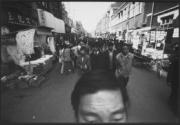
No. 3
50.8 x 61cm
Edition of 15 Gelatin Silver Print |

No. 2
50.8 x 61cm
Edition of 15 Gelatin Silver Print | 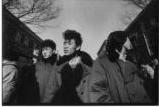
No. 1
50.8 x 61cm
Edition of 15 Gelatin Silver Print | 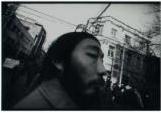
No. 8
50.8 x 61cm
Edition of 15 Gelatin Silver Print
|
Historical “Precision” and Memory: Mo Yi’s New Works
Gu Zheng
Mo Yi’s series Illusory Memories is based on classic, recognizable political photographs from the Cultural Revolution. Using the pixel, the basic unit of digital photography, he replaces the silver salt granules of traditional photographic methods, such that these “classic” images are divided into square pixels, creating an abstract image. Because the majority of these abstract images come from classic pictures from China’s red era, the atmosphere and context of that time stubbornly remain in the works. These pictures have undergone Mo Yi’s history-removing pixilation, but they persistently reflect a certain noise, upheaval, and unease. Through this ahistorical treatment of these pictures, he restricts the ability of these specific historical images to arouse the emotion of a certain time and place, and it makes him unable to take advantage of this emotion when he intends to further criticize history.
This unique processing removes the narrative aspects of these figurative news images, such that only an abstract effect remains. However, the abstract effect obtained through computer manipulation is not perfect, because it is not completely separated from the original composition of the image. Although the historical information in the picture is made blurry and nearly unidentifiable, if we back away from the painting a certain distance, we can still obtain some of the basic information of the original; even these blurry images will bring back memories for certain viewers who have come out of that unique era. Here, abstracted “history” quietly emerges before our eyes, even though its visual precision has been significantly reduced. In moving closer to and farther from the work, our bodies allow historical figures to hide and reemerge. This process reflects history’s complexity and highlights history’s passivity. In Mo Yi’s work, this passivity is shown in the fact that, after we adjusts our distance from the work, the original picture may still reappear in the course of this active adjustment. This bodily viewing movement allows us to realize the simultaneous presence of the history as object and the object as artwork and consider the relative positions of ourselves, the artwork, and history.
Through the relationship between the viewer and history that this method implies, Mo Yi profoundly reflects on people’s bodies and actions. Pixilation, an effect unique to digital technology, challenges our habits of seeing and also changes historical “precision” according to the logic of digital technology. The different feelings toward the artwork (and the historical events it contains) that are produced by the backward and forward movement of the human body adjusts and combines historical memory and the body in strange ways. When we are willing to examine history, we must be far from the artwork to obtain specific historical details. When we move closer to the work, we discover that we know nothing. Mo Yi created this unique set of circumstances to stimulate historical memory and require us to reconsider the possibility of reviewing history and the reliability of historical memory.
Mo Yi has also added words to the surface of these pixilated historical images, which have been disintegrated by digital technology. These words show his personal views on the depicted scenes and the historical people and events they represent.
Some of these words are revolutionary phrases produced at the same time as the images, and some of them are new texts that mock or reflect on that time. They all relate to, evoke, or satirize these historical images. Therefore, after these words are overlaid on the image, the experience of reading and looking becomes richer and more complicated. From this, we see Mo Yi’s complex presentation of history and historical memory, and become more thoughtful in creating our own interpretations of the conflicts and dialogues between the images, albeit pixelated, and the words. These words have various linguistic effects; the precise effect of these words and carefully selected and pixelated historical images is reliant upon the path that Mo Yi has set and our own experience and knowledge. The complex composition of the images and the dual structure of the words are layers of protective screens for Mo Yi’s reflections on history and reality. Different generations of viewers and readers (as anyone looking at the work is both viewing and reading) are likely to have different reactions to the series.
Mo Yi reduces the narrative content of the image using digital means and gives the words a dominant role in the work, establishing a new barrier to the judgment of history. The competition, opposition, and mutual interpretation or interference of the images and words transforms his reflections on history into a mode of thinking that confuses the point of the image. These works present a new visual experience of the meaning of these words. The irresolvable gap between word and image has enticed many artists, all of whom seek a way to build a relationship between the two. Of course, their goal is not to establish a relationship; they use the creation of a relationship between word and image to explore a resolution to the new issues by which they have become trapped. This series is one of countless attempts to resolve these issues.
Lastly, red threads emerge from between the pixel blocks that make up the works. They add tactility to the pieces, creating a unique texture. However, this bright red and the way in which it was produced compel us to think of the bloody history of the period, which is soaked in the blood of countless people. This tangible blood red and its fuzzy covering of the image gives the works a new spatial dimension and increases the weight of history and historical memory. The threads grow from a text produced by the layering of abstract images and words, thereby creating a subtext for the text, enriching the text, and independently establishing a new way to interpret the text. The threads are both independent and dependent, giving the works a new texture and further expanding the meaning of the work.
Illusory Memories reflects new transformations in Mo Yi’s art, including the transformation from the direct and realistic use of images to express his views on reality and aesthetics to the deconstruction of figurative images until they become abstract, and the transformation from the production of pure images to the production of conceptually composite artwork. Both of these changes reflect Mo Yi’s strong willingness to doubt everything about his views on aesthetics and reality.
In his long artistic career, Mo Yi has always surprised us, but we have always been somewhat prepared, because we know that he always has something brewing in the back of his mind and is simply looking for a time and place to let it out.

|
Tossing Bus,1989-1990
|

|
Illusory Memories
|
Mo Yi
1958 Born in Tibet, China
1993 Walking along the northwest part of the Silk Road
1995 Interviewed by NHK(Japan)
1998 Interviewed by NHK(Japan): The New Wave of Chinese Culture
1999 Life Experience: 41 Days
Currently lives and works in Beijing.
SOLO EXHIBITIONS:
2013 “Illusory Memory”, ThreeShadows +3 Gallery, Beijing
2011 “The Scenery with Red Color”, Art Channel, Beijing
2011 “The Scenery with Red Color”, Zen-Foto Gallery, Tokyo, Japan
2010 “I Was in My Scenery”, Three Shadows Photography Art Center, Beijing
2010 “My illusory City-198719982008”, ARLES IN BEIJING - Caochangdi Photo Spring, Beijing
2009 “Twenty Years, Twenty Sky”, Performance Show, Berlin, Germany
2009 “My illusory City-1987199519982008”, Pingyao International Photography Festival, Shanxi
2008 “That Month of That Year”, Lianzhou International Photography Festival
2008 “The Community”, Songzhuang Art Museum, Beijing
2008 “Fragile-The Tibet”, Jiushi Gallery, Beijing
2007 “My Neighborhood”, Walsh Gallery, Chicago, USA
2005 “Landscape with Red Color”, Installation, Lianzhou International Art Festival, Guangdong
1999 “Dancing Streets”, Tokyo Zeit Photo Salon, Japan
1996 “Photos in the Alley”, Performance Show, Old Town of Tianjin
1996 “City Space”, Zeit Foto Salon, Tokyo, Japan
1995 “Photos in the Alley”, Performance Show, Old Town of Tianjin
1989 “Go”, Performance Show, Downtown of Tianjin
1988 “Expressions of the Streets”, Performance Show, Binjiangdao Street, Tianjin
GROUP EXHIBITIONS:
2008 “Daegu Photo Biennale”, Korea
2008 “Fine Work-Three years of Lianzhou”, Beijing Tomorrow Gallery, Beijing
2007 “Visions of China”, Italy
2005 “Ego”, Italy
2005 “Guangzhou International Photography Biannual”, Guangdong Art Museum, Guangdong
2004 “Between Past and Future New Photography and Images of China”, New York, Chicago, Seattle, Berlin
2004 “Related to I”, Beijing Tokyo Gallery, Beijing
2004 “Special Angle of View”, 798 Art Space, Beijing
2003 “City Portrait”, Tokyo, Japan
2003 “China Humanism”, Guangdong Art Museum, Guangdong
2003 “All about Me”, Pinyao International Photography Festival, Shanxi
2002 “Re-interpret: 10 years Of Chinese Experimental Art”, Guangzhou Contemporary Art Triennial, Guangdong
1999 “The End Of Century, the Changing China”, Experimental Art Exhibition, Art Museum of Chicago University, USA
1998 “Contemporary Photography Exhibition”, Berlin Art Museum, Germany
1997 “New Image-Conceptual Photography”, Beijing
COLLECTIONS:
Houston Museum, U.S.A
Chinese Image and Vedio Archive, Canada
Guangdong Museum, China
Nanjing Square Gallery of Contemporary Art, Jiangsu, China
Zeit Foto Salon, Japan
Mo Yi’s works have been collected internationally by many other museums and private collectors from U.S.A, France, Britain, Japan and China.













































